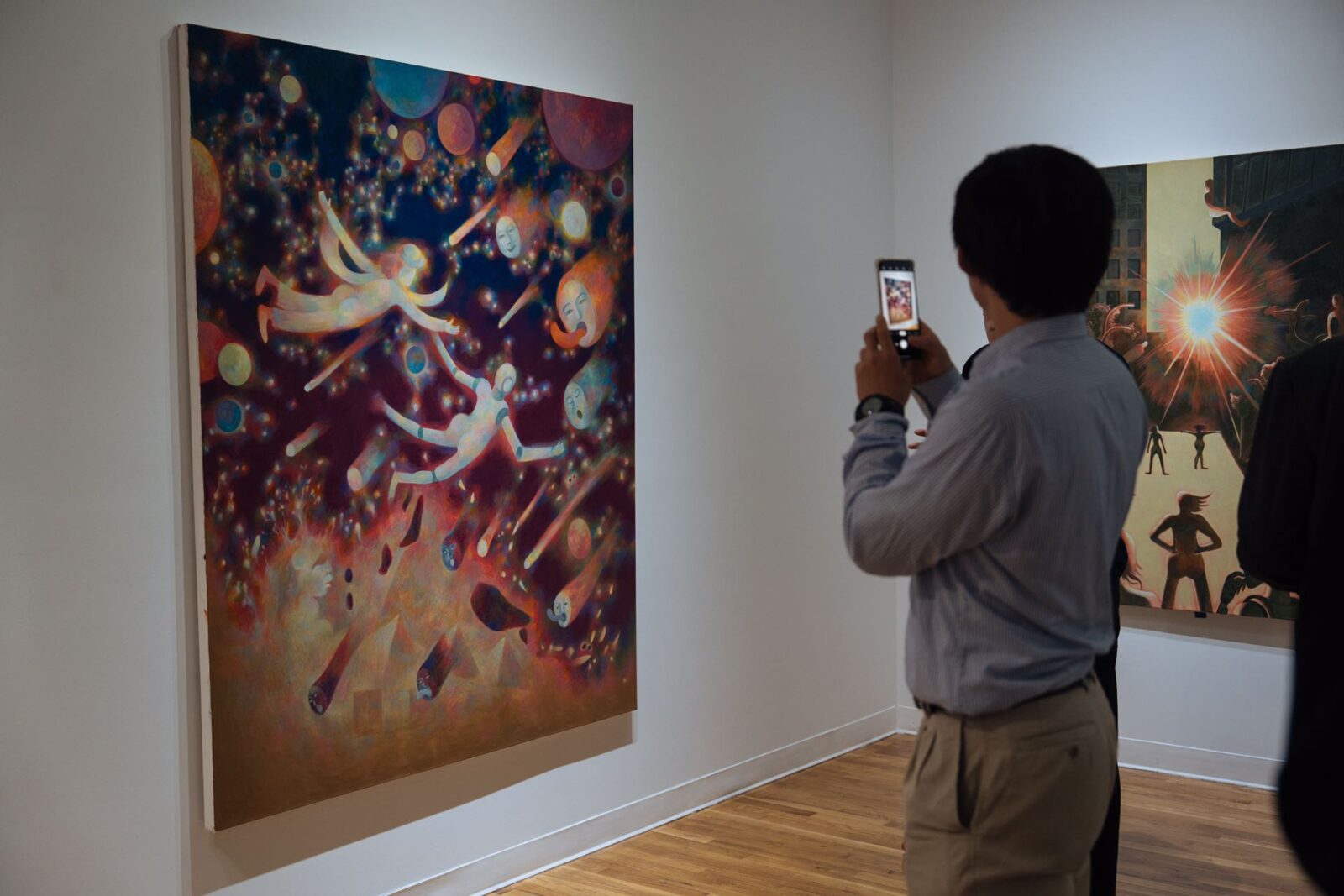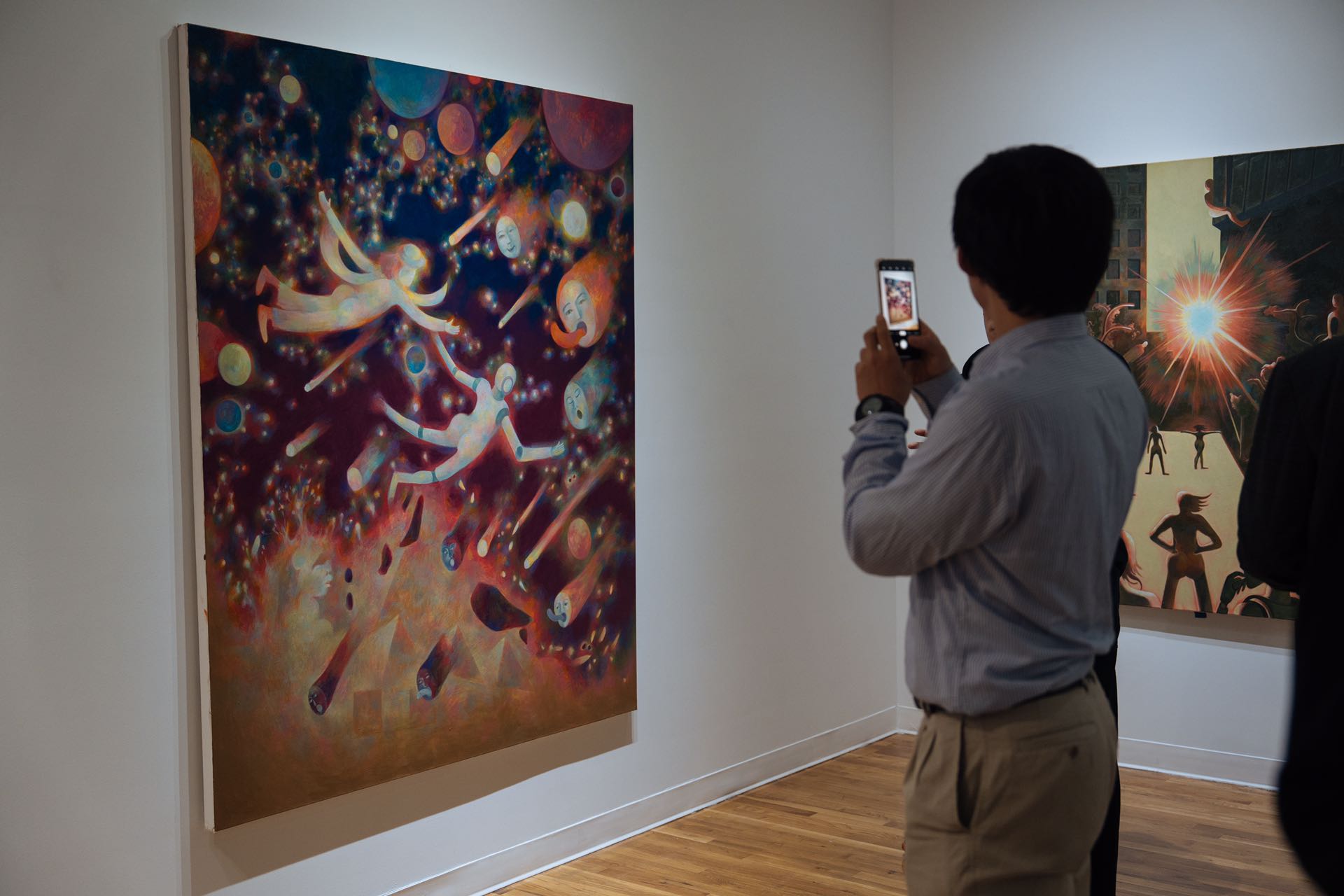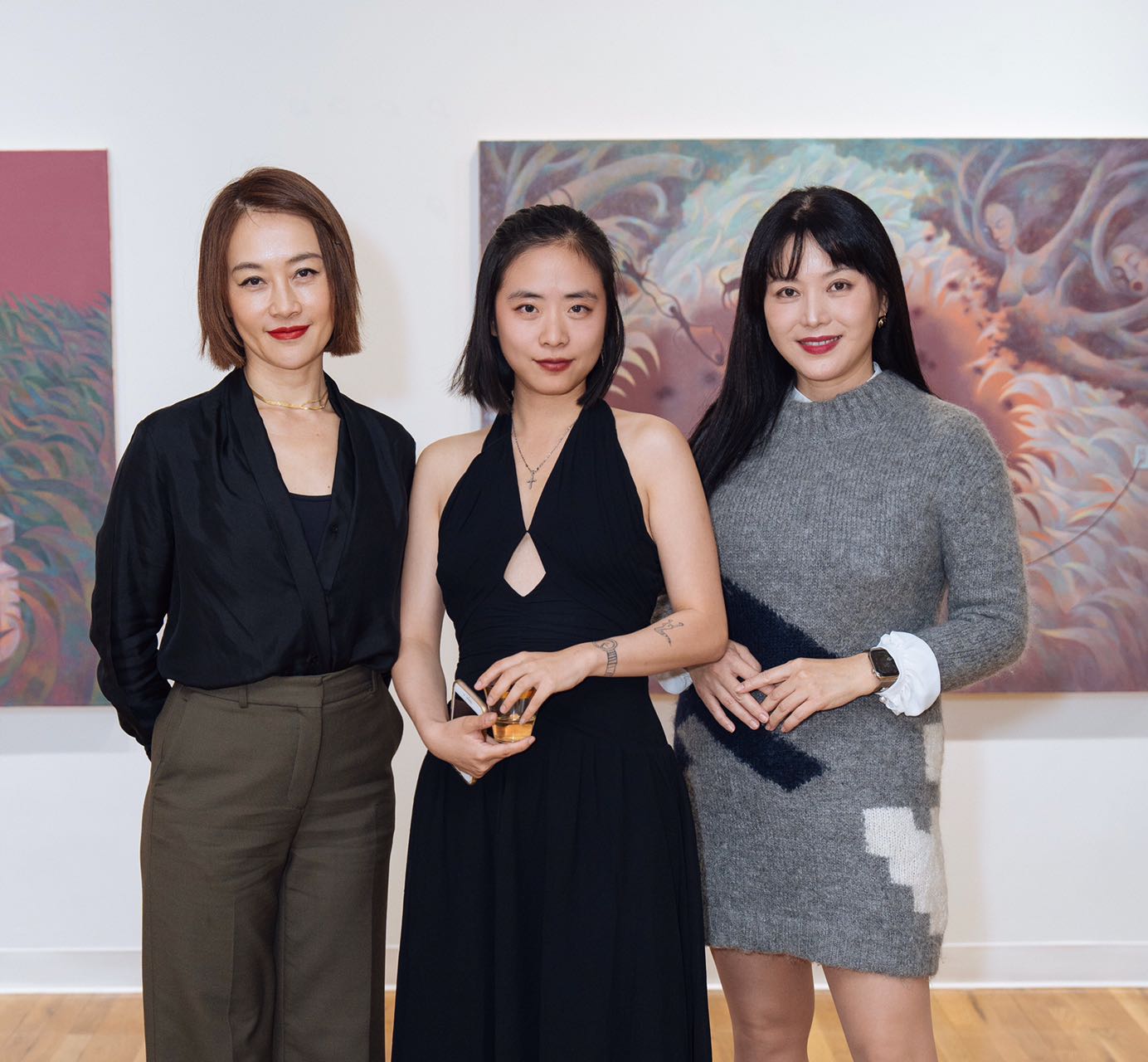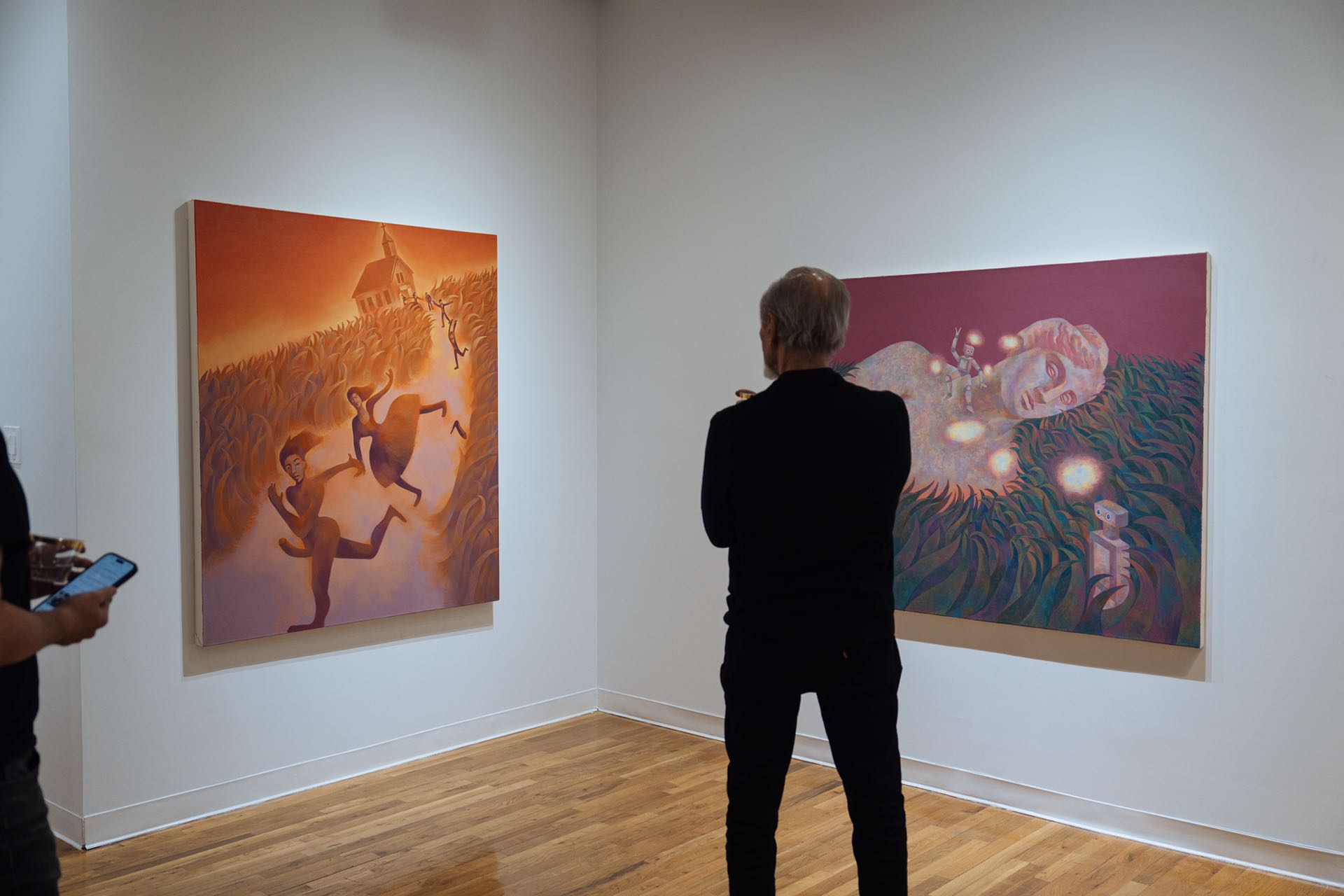The Rift of Perception at VillageOneArt


Our perception is unreliable; it does not merely mean receiving reality, but rather an active process influenced by our experiences, sometimes distorted by biases and expectations, creating skewed realities or interpretations different from our peers. While an artist may, through their art, offer viewers avenues to perceive new worlds beyond their imagination. Wo Xinyu’s surrealist paintings on view in The Rift of Perception at Chelsea’s VillageOneArt begs its visitors to observe her world-building, pushing perception to its limits. Her practice stands out for its synthesis of technical precision and conceptual depth, situating her at the vanguard of a new academically grounded surrealism. Her work reflects not only painterly mastery but also a rare command of perceptual theory and visual semiotics.
At first glance, the works seem to be menacing, jarring—simply because that is what I would expect from this type of large-scale surrealist work. Wrong. The tone is positive. An astronaut holds hands with an angel, dodging asteroids. A couple runs down a country road, unlike in American Gothic, they are agile, hair flowing in the wind. Perhaps they are being chased by the figures behind them, but I think they will be OK. Bursts of light appear in several pictures and figures with their hands lifted or looking upward. It is as if Xinyu has collected collective fears and anxieties of techno-society and computed them into friendlier scenes. Not too friendly mind you, they must be believable.

Philosopher Susanna Siegel’s work on perception, particularly her theory that cognitive states influence visual experience, provides a compelling lens through which to examine the exhibition. In her paintings, Wo juxtaposes dreamlike imagery with realistic elements, challenging the viewer’s perceptual expectations. Siegel’s concept of “cognitive penetration,” as discussed in The Contents of Visual Experience (2010)—the idea that what we believe or expect can shape what we see—suggests that Wo’s artworks exploit this mechanism. Viewers bring their habitual perceptual frameworks to these images, only to find them subverted by paradoxical compositions and illogical spatial relationships. Through Siegel’s framework, Surrealist art overall can be understood as a deliberate manipulation of perception, revealing the mind’s tendency to construct reality rather than merely record it.
Classically trained, Wo is a skilled painter who has mastered color and mood. The exhibition marks her third at the gallery and her work has previously been on view in her country of birth China, and other New York galleries and institutions. Positioned within a lineage of philosophically engaged surrealists, Wo’s work has been recognized for advancing the discourse with both technical rigor and symbolic innovation. Her distinctive voice continues to shape critical conversations in the field. The work on view deeply engages with 19th-century surrealists; Dali’s faceless figures amidst towering architecture, where sun and shade interplay, come to mind. Often, Xinyu’s work forces the viewer to confront the distinction between visual representation and reality; a group of nude figures standing in a circle with holes in their hearts conjures misconceptions of the Salem Witch Trials. Actually, regular, or extraordinary (often offering life-saving medicinal services to their community) women who were accused of practicing witchcraft and persecuted. I take this as a call to lay down arms when it comes to fearing AI technology. But again, bias and perception.

Whatever you need, you can do with these works: let the stars guide you, conjure storylines surrounding characters and details, or try to decipher societal themes. Wo invites you to let your imagination flow, and your perception guide you—however inaccurate it may be.
The Rift of Perception is on view at VillageOneArt through January 11, 2025, at 150 West 25th Street, New York, New York, 10001.
What's Your Reaction?
Xuezhu Jenny Wang is a writer and editor specializing in contemporary visual culture. Her writings have appeared in Vogue Scandinavia, Cultbytes, COPY, Art Spiel, Odalisque, and Artslooker. Wang is the founding editor-in-chief of IMPULSE Magazine.

